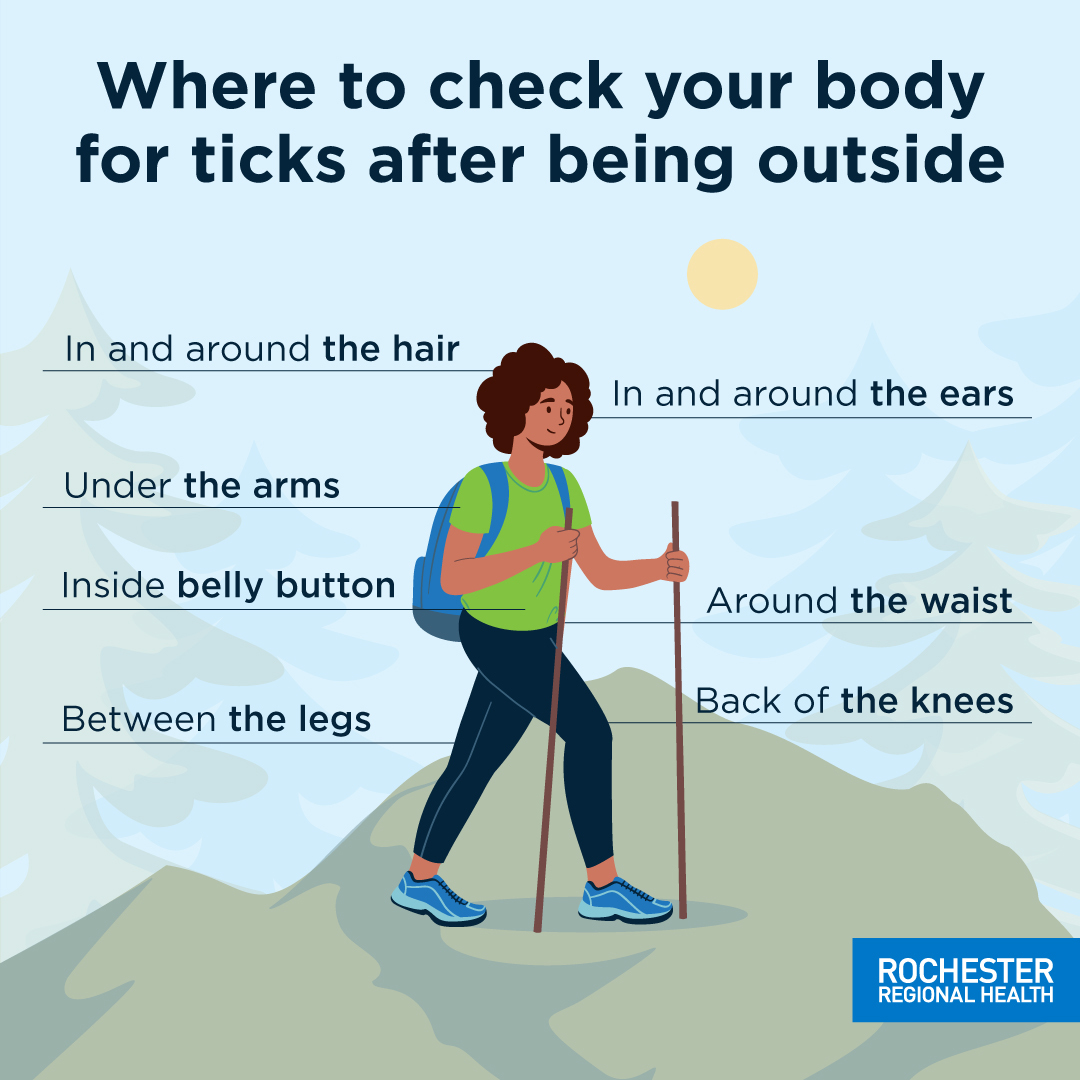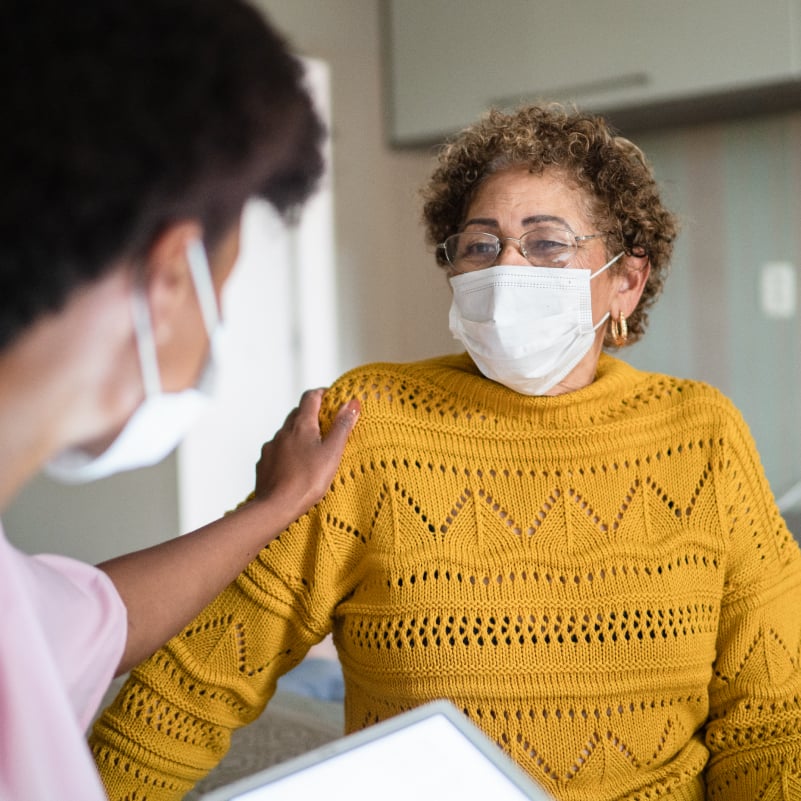As temperatures start to warm and plants begin to grow taller and greener, wildlife starts to emerge. Among the animals and insects that come out in the spring are ticks – which sometimes carry diseases that can affect humans and animals alike.
Anthony Ocon, MD, PhD, is a rheumatologist with Rochester Regional Health and discusses the precautions we can take against ticks in the spring, and symptoms and treatments of tickborne illnesses in case of a tick bite.
Ticks: the basics
The most common ticks in New York are deer ticks, which are most active from March to mid-May and from mid-August to November, according to the New York State Department of Health.
Adult ticks are more difficult to spot than most people think, often growing no larger than the size of a sesame seed. Once fully grown, ticks have 8 legs, which they use to grab onto a host that comes into contact with them while walking by.
“Ticks may attach themselves almost anywhere on the body where skin is exposed,” Dr. Ocon said. “Usually, the legs are one of the most common places, and the insect is so small that people don’t realize it’s there.”

Once a tick is on a human or animal, it will bite through the skin and insert a tiny feeding tube to suck blood out. During the feeding process, any disease or pathogen carried by the tick will be transmitted to the host. Once the tick finishes feeding, it drops off and moves onto its next host.
Ticks typically have a life cycle lasting no more than 3 years.

Symptoms & health risks
It is important to note that the majority of people who are bitten by ticks do not contract Lyme disease. However, infections are still a very real health risk.
Aside from Lyme – the most well-known disease associated with ticks – other conditions that can develop include anaplasmosis, babesiosis, ehrlichiosis, Powassan virus, and secondary cellulitis.
Tickborne illnesses almost all display signs such as:
- Fever
- Chills
- Muscle aches/pain
- Fatigue
- Rashes
A bullseye rash is usually the earliest evidence of a bite. If no rash develops following a tick bite and a person goes untreated, they might develop arthritis-like symptoms in larger joints such as their knees or elbows. If this pain becomes chronic, a referral is usually made to a rheumatologist.
In very rare instances, patients can develop Bell’s palsy or heart blocks due to Lyme carditis.
Treatments
Most people identify a tick bite based on the textbook bullseye rash and seek treatment from their primary care provider. Once the tick and/or tick bite is identified, most infections can be avoided by removing the tick and thoroughly cleaning the area using warm water and antibacterial soap.
If a person needs to remove a tick from their skin, the best way is to use clean, fine-tipped tweezers. Grasp the tick as close to the skin as possible, pull upward evenly and slowly until the tick is out. Dispose of the tick by flushing it down a toilet.
“The goal when removing a tick from the skin is to do so as quickly as possible,” Dr. Ocon said. “Avoid old wives’ tales such as using heat to force the tick to detach from the skin or covering it in petroleum jelly. Ticks typically need to be attached for 48-72 hours to transmit Lyme disease.”
In most cases, if there is a concern for infection with Lyme disease, a single preventative dose of an antibiotic such as doxycycline or amoxicillin will kill any infection. In the rare event of a tick bite that develops into a more advanced infection, longer courses of antibiotics may be prescribed.
Prevention
The most effective way to prevent tickborne illnesses is to avoid areas where ticks are prone to live. Ticks tend to live in wooded, grassy, or brushy areas.
For people spending time outdoors – hiking, gardening, walking, etc. – taking precautions before, during, and after any time spent outside is very important. Some of the precautions might include:
- Using insect repellant with Deet to keep ticks and other pests away
- Checking clothing for ticks during and after time spent outside
- Checking any gear or pets for ticks during and after time spent outside
- Showering with hot water within 2 hours of being outside
“Being cautious is the safest bet,” Dr. Ocon said. “The majority of ticks will not have Lyme disease. But if a person finds a tick on themselves, a family member, or a pet, they should remove it within 24 hours to avoid the risk of contracting Lyme disease.”










